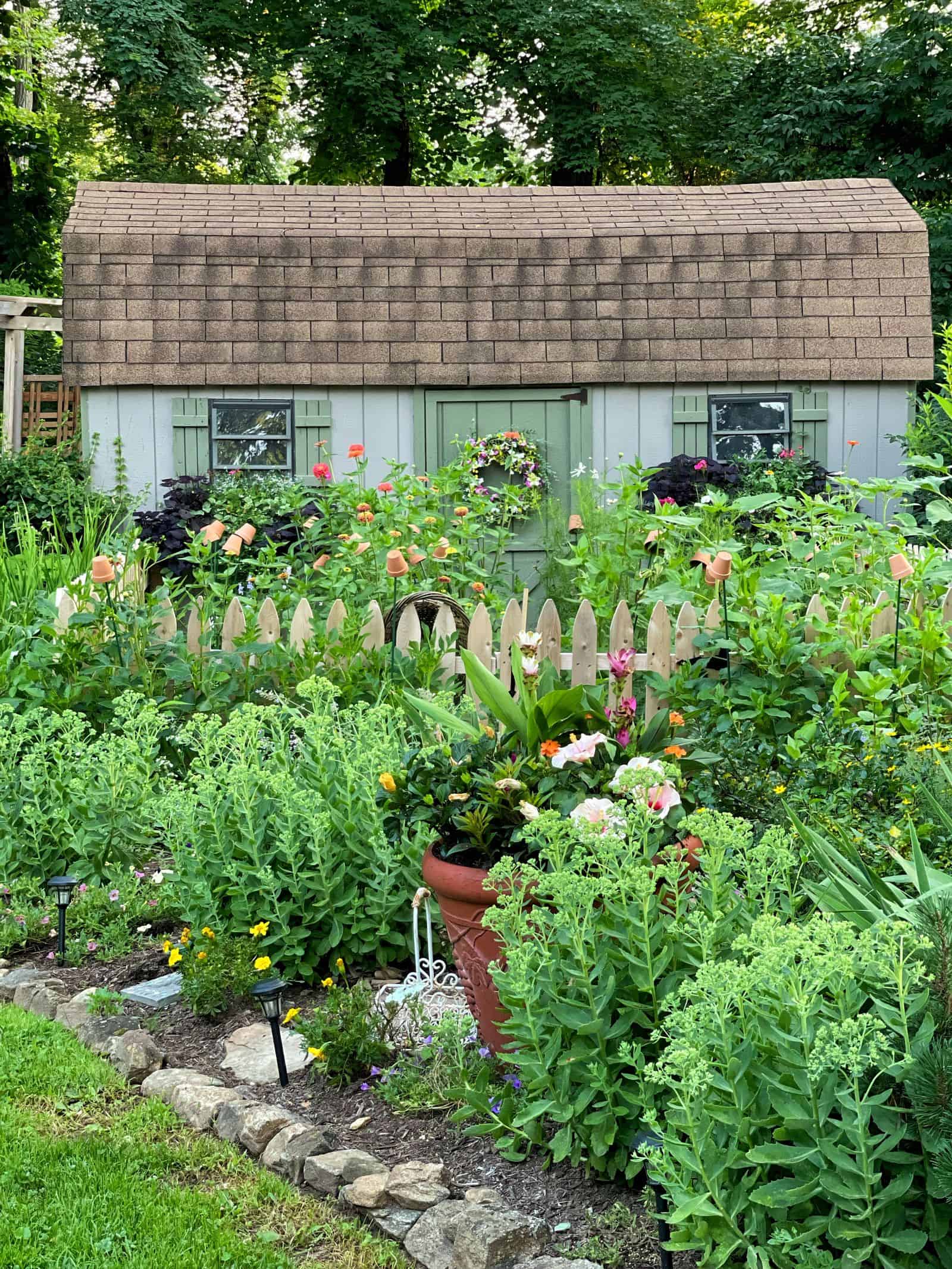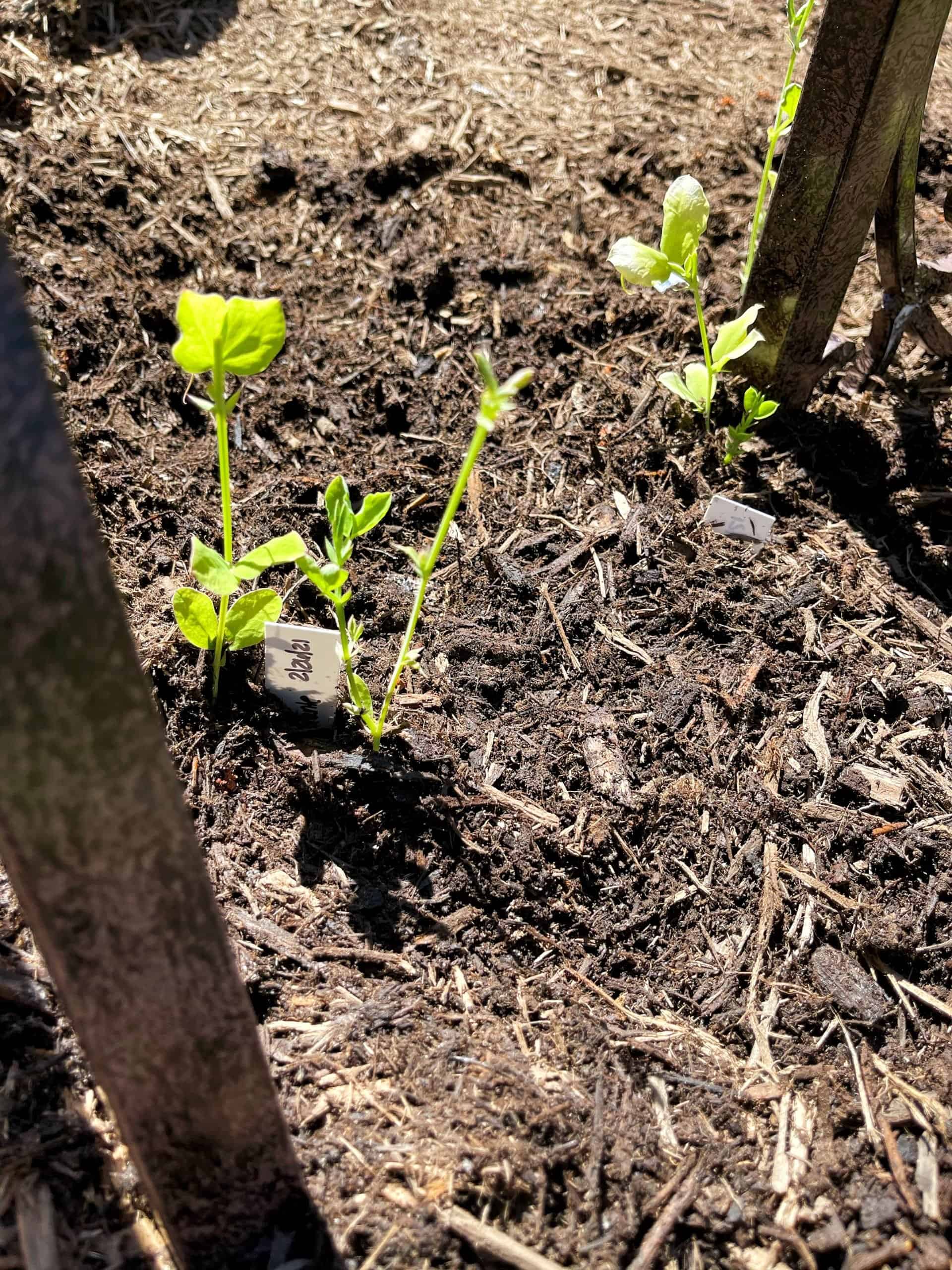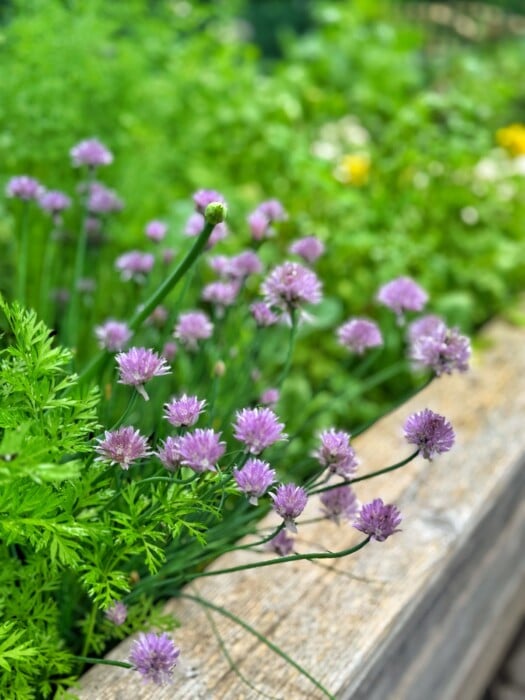Starting your first garden doesn’t have to be overwhelming. This step-by-step guide simplifies the process, offering practical advice and encouragement to help you create a beautiful and productive new garden.
Embarking on your gardening journey doesn’t have to be overwhelming. Whether you dream of vibrant flower beds, a bountiful vegetable patch, or a fragrant herb garden, this beginner’s guide will walk you through every step.
From selecting the perfect spot to nurturing your first seedlings, discover the simple joys of cultivating a healthy, vibrant garden. No green thumb is required. Are you ready? Let’s grow!
(Posts on stacyling.com may contain affiliate links. Click HERE for full disclosure.)
We spent 23 years in my former home. And I installed several new beds for different reasons. From flower gardening to growing vegetables or hiding equipment, I spent several years growing my gardens.
To give you an idea of how much I did, here are a few new gardens that I created and why:
- the front border is an everblooming cottage-style perennial garden that attracts pollinators
- rose hedge at the base of the deck garden to hide space below the deck
- vegetable garden
- woodland garden
- backyard border that conceals the septic bed drop-off
- well garden that conceals the equipment
- added more space for perennial divisions
- created a cut flower garden and cottage garden.
While there are a few ways to create a beds from scratch, today I’m sharing how to start a new garden with the classic approach. It’s a little more work but in the end, will be worth it.

Essential Pre-Garden Planning and Preparation
Before landscaping your yard, there are a few things to consider so you get the most out of it and grow plants with success.
Choosing What to Grow
The first thing to consider is the type of garden you want to grow. We need to understand what we want to grow, so we know the type of sunlight it needs.
Are you interested in growing a woodland garden? Do you want to grow a vegetable garden? Do you want to add a relaxing zen garden? Or maybe you want to grow beautiful flowers to design a cottage garden. How about a cut flower garden?
Whatever type of garden you wish to grow, it’s important to evaluate whether your yard can actually grow it. What I mean is, we may want to grow something, but the atmosphere of our property might not be conducive to growing it.
For example, if I have a heavily shaded yard, it will be challenging to grow a vegetable garden with a lack of sunlight. I may be able to alter those conditions by cutting back tree branches, etc. but these are things we need to consider before starting a new bed.
Explore Garden Styles
Choosing a garden style is an exciting step that shapes the look and feel of your garden. Here are some popular styles to consider:
- Vegetable Garden: Perfect for growing your own produce. Plan for rows or raised beds.
- Flower Garden: Focuses on aesthetic appeal with colorful blooms. Mix annuals and perennials.
- Herb Garden: Great for culinary use, often grown in small, easily accessible plots.
- Container Garden or Raised Beds: Ideal for limited spaces like patios and balconies. Use pots and planters.

Choosing the Right Location
Once we decide what we want to grow, we need to determine where to put the garden. Find the best spot in the yard that will provide the proper light conditions.
If you are not sure how much sun a particular area receives, spend a day watching and charting it. Start in the morning, check it hourly, and note whether it receives, sun, partial sun, shade, etc.
- 6-8 hours or more is full sun
- 4-6 hours is partial sun
- less than 4 hours is shade
It is also a good idea to take a soil test before planting in an area so you know how to amend the soil. I realize that sounds like an unnecessary step, but knowledge is power.
Knowing your soil conditions is tremendously helpful before planting. Why? Because the soil matters.
For example, some plants will not grow well in highly alkaline soil. You could give them all the right conditions and because they don’t love alkaline soil, they will not thrive and potentially die.
So it’s better to know that your soil is higher in alkaline before you plant acidic-loving plants like azaleas or rhododendrons there. Because if you skip this part, you will leave thinking you can’t grow stuff.
And while it’s true you can start a new bed without ever doing this step, save yourself time, money, and stress by doing the soil test. Soil test kits are available through your local garden extension, as well as local nurseries and big box stores.

Understanding Your Climate
Understanding your climate is crucial for gardening success. Different plants thrive in various conditions, so knowing your local climate helps you choose the right plants for your garden.
- Identify Your Hardiness Zone: The USDA Hardiness Zone Map divides regions based on average minimum temperatures. Knowing your zone helps you select plants that can survive your winters.
- Consider Microclimates: Your garden might have areas with different conditions than the general climate, such as shaded spots or areas protected from wind.
- Seasonal Changes: Understand your typical weather patterns throughout the year, including frost dates, rainfall, and temperature fluctuations. This knowledge helps you plan planting and harvesting times.
- Humidity and Rainfall: Some plants require more water or humidity than others. Choose plants suited to your area’s average rainfall and humidity levels to reduce watering needs and prevent diseases.
If you aren’t sure what your first and last frost date is, you can check it by your zip code here.

Seasonal Planting Guide
Planning your garden with the seasons in mind ensures healthy growth, bountiful harvests and beautiful blooms. Here’s a guide to help you get started:
- Spring: Ideal for planting cool-season crops like lettuce, peas, and spinach or cool-season flowers like pansies, ranunculas, sweet peas, and snapdragons. It is also, a great time to start summer annuals like zinnias and strawflowers indoors and plant perennials when the ground can be worked.
- Summer: Plant warm-season crops such as tomatoes, peppers, and beans or warm-season annuals like marigolds, petunias, and impatiens. This is also a good time for planting herbs.
- Fall: Perfect for cool-weather vegetables like kale, broccoli, and carrots. Plant bulbs for spring blooms.
- Winter: Focus on indoor gardening or use cold frames and greenhouses for hardy greens and herbs.
Understanding when to plant ensures your garden thrives year-round.
Planning Your Garden’s Size and Shape
Similar to choosing the right location, it’s important to determine the new garden’s layout. Consider the overall size and amount of plants you wish to include and start there.
To preplan your garden design, measure the area (LxW) to determine your square footage. Then look at what you want to grow to determine how much you can fit in your new garden space. Measure your garden area to understand your limits. Consider sunlight, shade, and existing structures.
Draw a simple plan to visualize plant placement, pathways, and garden beds. Ensure easy access for maintenance. Account for the mature size of plants to avoid overcrowding and ensure each plant has enough space to thrive.

How to Start a New Garden
While starting a new garden is pretty easy to do, it is very tiring because it is a lot of labor to remove the grass. But it can be done in a day or less depending on the size of the bed you make.
Necessary Supplies For the First-Time Gardener
If you’ve been gardening for a while, you probably have most of the supplies needed to start a new garden. But in general, here’s what you need to remove grass and start a new bed.
- pitchfork
- spade shovel
- wheelbarrow
- mulch
- garden soil
- compost
- humus
- plants
- garden hose or extension cord
Starting a Garden From Scratch: Step-By-Step Directions
Once you have all of your supplies ready to go, it’s time to start digging out the grass. Here’s how start a new garden bed.
- Choose the location and layout the new bed with a hose or long extension cord.
- Use the spade shovel to follow the outline of the new bed. Slice through the grass roots and dig out the grass until the outline is complete.
- Remove all grass with wheelbarrow and replant or dispose. We replant what we can in other areas of the yard that are struggling to grow lawns.
- If satisfied with the size and shape of the new bed, dig out the rest of the grass using the spade shovel, pitchfork, or both.
- Pitch or turn the soil over to aerate and loosen it up. It will be easier to dig and plant after.






Arranging and Planting Your Garden
- Lay out your plants. Be sure to read the tags on the plants purchased. Understand the overall size and work in odd-numbered groupings. Space plants apart according to the plant tags. The new bed may look sparse the first year or two but will fill in over time.
- Using a shovel, dig a hole 2x the size of the root ball.
- Remove plant from the plastic nursery pot, fan out the roots with your fingers to encourage them to grow outside the root ball.
- Add some fresh garden soil and amendments to the hole before planting. Note about soil: There are many brands of garden soil out there. I usually look for brands that have soil amendments like compost and hummus already mixed in – it’s just easier that way.
- Set the new plant in the hole and backfill the hole with fresh garden soil, amendments and existing soil.
- Top the bed off with fresh mulch. It’s best to wait to mulch after planting the new bed. In my case, I don’t have any of the new plants yet and had a huge pile of mulch to spread. Therefore, I mulched my new garden first, but it can be done either way.



Effective Garden Maintenance Tips
To keep your new garden thriving all season long regular maintenance is essential.
Water your gardens efficiently making sure plants receive deep, consistent moisture, especially during dry periods. Overhead watering can be detrimental, so using soaker hoses or drip irrigation is ideal. It’s also a good idea to water in the earlier part of the day so plants have the opportunity to absorb the hydration during sunlight. Watering from above or later in the day promotes pest and disease problems.
Depending on what you are growing, fertilizing is also important. Use organic or slow-release fertilizers to provide steady nutrients throughout the growing season.
Regular deadheading or removing spent flowers encourages continuous blooming and prevents plants from diverting energy into seed production. It will also keep your garden looking neat and tidy during the growing season.
For taller plants, staking is necessary to prevent flopping and ensure proper growth. Use stakes, cages, or trellises to support plants like tomatoes, beans, and tall flowers, securing them with garden ties.

Common Gardening Mistakes to Avoid
Starting a new garden is exciting, but avoiding common mistakes ensures your success.
- Overwatering is a frequent error; too much water can drown roots and cause rot. Ensure proper drainage and only water when the soil is dry.
- Planting too closely can lead to overcrowding and competition for resources. Follow spacing guidelines on seed packets to allow each plant room to grow.
- Ignoring soil quality is another pitfall; test and amend your soil with compost or other organic matter to provide essential nutrients.
- Neglecting to mulch can lead to weed growth and moisture loss; applying a layer of mulch helps retain soil moisture and suppresses weeds.
- Failing to consider sunlight needs can stunt plant growth. Ensure your garden site receives the appropriate amount of sunlight for the plants you choose.
Discover an Easier Way to Start a Garden: Lasagna Gardening
Lasagna gardening is an effortless, no-till method perfect for beginners. This approach involves layering organic materials, like compost, leaves, and straw, directly on top of the ground to create rich, fertile soil without digging.
Start by laying down cardboard or newspaper to smother weeds, then alternate layers of green and brown materials. Over time, these layers decompose, resulting in nutrient-rich soil ready for planting. Lasagna gardening simplifies the process, reduces labor, and promotes healthy plant growth.

Final Thoughts About Starting a Garden From Scratch
Starting a new garden can be a rewarding experience with proper planning and care. By understanding your climate, choosing the right plants, and maintaining your garden diligently, you’ll set yourself up for success. Don’t forget to explore methods like lasagna gardening for an easier start. Ready to begin your gardening journey? Visit the full article for detailed steps and additional tips to help you create the garden of your dreams. Happy gardening!
Have you started a new garden before? Do you have any tips to share? If you have any questions, comments, or suggestions, please let me know in the comments below. I’d love to hear! And feel free to share this post with anyone you think would find it helpful too.
For more information about starting a new garden, please read this article from the University of Georgia Cooperative Extension.
Thank you for stopping by the blog today.
Enjoy your day! xo










My New Garden
I’m so happy I started this new garden. Because I wanted to test the waters with a new cut flower garden, I added several dahlia varieties and roses just to get my feet wet.
But I also did not love the original shape of the existing bed so adding on to it helped create a more aesthetically pleasing design.
This garden addition is 3 years old now and is still doing great! Here are some of the blooms I planted.


The roses totally have my heart. I bought them all bare root after starting this garden section and they bloomed the first season!
In addition to growing roses here, I also tucked in a few dahlia varieties. It’s amazing how beautifully unique these flowers are.
And the more you cut the more flowers you have.
Gah! I’m in love. I have to grow more!

After the first season of growing these dahlias here, I created a much larger cut flower garden outside of the shed in the backyard.
Why?
So I could grow a lot more flowers!!!







